VN-ese Waltz: November - Chaos;Child
By Mento 1 Comments
Decided to spend the second half of 2021 checking out some renowned visual novels. Sometimes my ideas aren't any more elaborate than that. I've tried to discuss the following games in as spoiler-free a manner as possible, with a very spoilerish section at the end for my final thoughts on where the story goes.
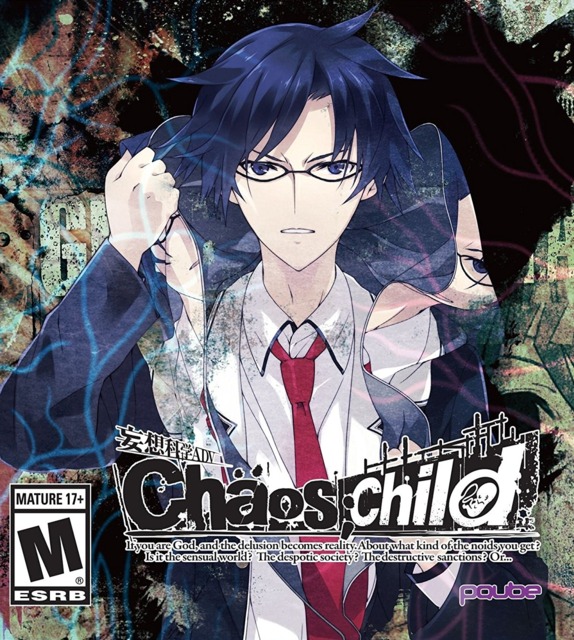
Welcome once again to the land of visual novels, where extreme violence and flagrant fanservice work in tandem to make me squirm in my seat. We're long past Halloween at this point and yet I find myself with another horror game: Chaos;Child is part of the Science Adventure franchise from 5pb. and several others, which I've visited twice before with Steins;Gate (note the trademark gratuitous semi-colon) and Steins;Gate Zero. While the two Steins;Gate games were directly connected by their continuity, Chaos;Child appears to be set in a different version of Tokyo with a different set of characters; however, I'm not wholly certain if it isn't meant to be one connected universe. I know that the other sub-series in the Science Adventure franchise, Robotics;Notes and its sequel DaSH, have a few Steins;Gate characters too. What perplexes me about Chaos;Child's connection to the others is that it starts with a pretty significant in-universe event: a 2009 earthquake centered on Tokyo's Shibuya district that killed thousands of people.
Chaos;Child sees the newly rebuilt Shibuya of 2015 terrified by the re-emergence of a notorious series of murders that previously ended with the earthquake, each of which are as bizarre as they are perturbing. This naturally has everyone's curiosity piqued, especially the aspiring journalists of the local highschool's newspaper club, of which the game's bespectacled protagonist - Takuru Miyashiro, a boy orphaned by the earthquake - is the president. Taking it upon themselves to investigate these new murders, the club members quickly find themselves out of their depth when it turns out the paranormal is involved. While Steins;Gate had more of a "hard sci-fi" approach to its thriller plotting, building a story around a hypothetical system of time-travel, Chaos;Child goes pure fantasy with its focus on psychic powers. It's quickly made evident to the player, if not immediately so to those characters investigating, that each victim had some sort of inchoate psychic ability they perhaps had yet to understand; likewise, it seems apparent that their killer(s) did as well. Like Steins;Gate, it feels like movies were major influences on Chaos;Child's story, in this case David Cronenburg's 1981 film Scanners and Katsuhiro Otomo's 1988 film (and the manga that preceded it) Akira: the former with its crime thriller story of a homicidal psychic hunting down benign ones and the latter with its exploration of the potential devastation caused by the untapped power of the human mind. The game itself likes to reference movies often enough that I can't imagine these connections are coincidences, and Steins;Gate too was very particular about its cultural touchstones.
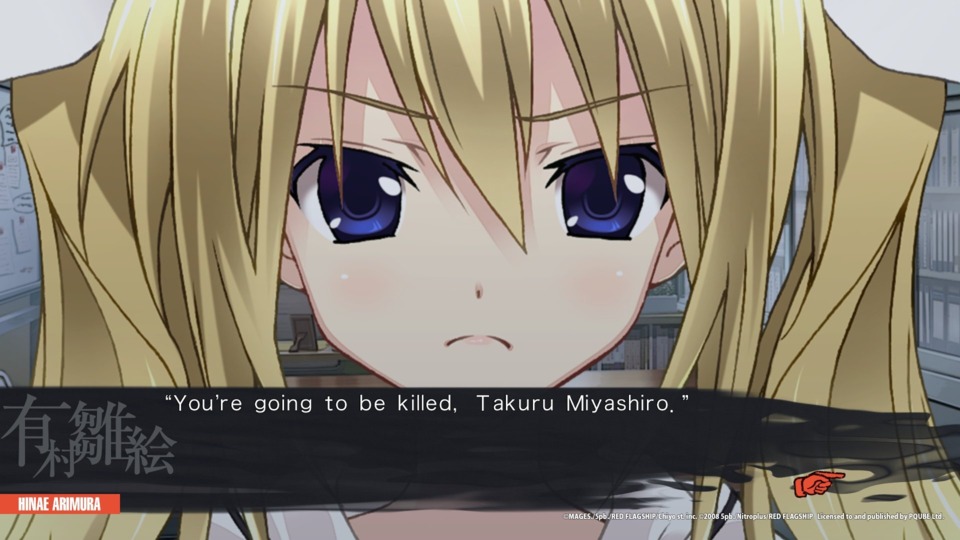
As with most of the visual novels we've covered in VN-ese Waltz, the only truly interactive aspect is that the player can cause branches in the storyline by making the occasional decision. However, it's a pretty subtle process that relies on the protagonist's "delusions": momentary flights of fancy that might lead to a ridiculous non-canon version of an otherwise normal conversation or scene. Each delusion can be positive or negative, activated similarly to the L1/R1 Paragon/Renegade triggers from Mass Effect: the former tend to be awkward seduction fantasies with members of the game's mostly female cast of ancillary characters, i.e. the fanservice, while the latter might result in a sudden brutal act of violence or moment of suspenseful horror. There's also the "neutral" option in which neither delusion is triggered and the game proceeds as normal. Chaos;Child does have that issue that Steins;Gate does where the protagonist is deliberately unlikeable at first due to their poor attitude towards others, lack of social graces, and general wiener nature, and then as more of their tragic backstory is laid bare you come to understand them better, if not fully root for them. Much of that early revulsion is due to these "delusion triggers," as the game calls them, which tend to get a little too in touch with the psyche of a perpetually horny and paranoid teenager. The game does occasionally throw in some genuine moments of levity here too, including a part where your mute "ESO2"-obsessed kouhai reveals herself to be a Leia Organa space princess ersatz, so I've tried to activate them whenever possible in spite of myself. Given the game's themes of mind over matter and the vividness of these delusions, however, you might've already figured out how they could affect the "reality" of the game despite being fictional constructs. I've not reached the part of the game where they make it explicit that the protagonist's daydreams are having any affect on the real world, but I know a VN's story-branching system when I see one (though the door's still open for some sort of Silent Hill: Shattered Memories meta influence instead, wherein the story shifts to match the player's state of mind rather than the protagonist's).
In terms of the story and plotting it's been mildly compelling with its balance of horror suspense, deductive reasoning scenes (another point where there's some player interaction: these mostly work as "have you been paying attention?" plot comprehension lessons), and a gradually-building foreboding unease similar to how the world slowly becomes more insane throughout Persona 3's plot progression. It has that potboiler sensibility where chapters end on big suspenseful cliffhangers and it certainly doesn't shy away from the violence: the game opts to start with a vlogger being hypnotically compelled to chop off and eat his own arm during a livestream, dying from hypovolemia shortly thereafter. This then becomes the first of the game's procession of equally Se7en-ish absurd murders. The game's limited visuals don't really shy away from depicting them in full either, though there is a scarce amount of actual gore shown. It's also big on character interactions, spending time to develop the relationships between its principal cast when the murder mystery aspect isn't at the forefront, in what I imagine is setting the stage for some very unfortunate casualties further down the road. Graphically the character designs tend to run together - I've taken to identifying the scrappy ingénue and the doting adoptive sister characters by their hair colors, because there's little in the faces to set them apart - and they could probably do with more expressions and portraits for minor characters (kinda easy to tell who's important if they show up with a sprite when they talk), but the backgrounds have been nicely detailed so far and, as stated above, the murder and violence scenes are suitably grotesque.
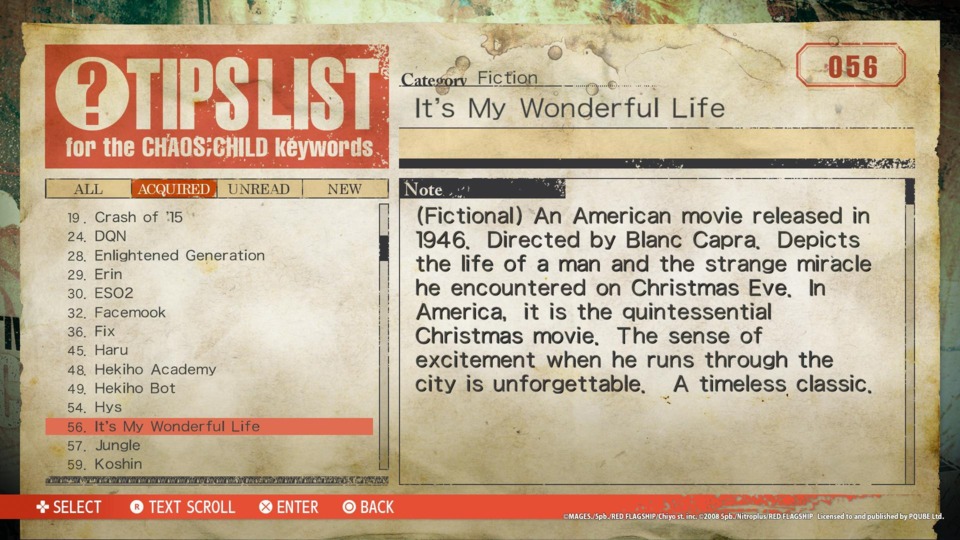
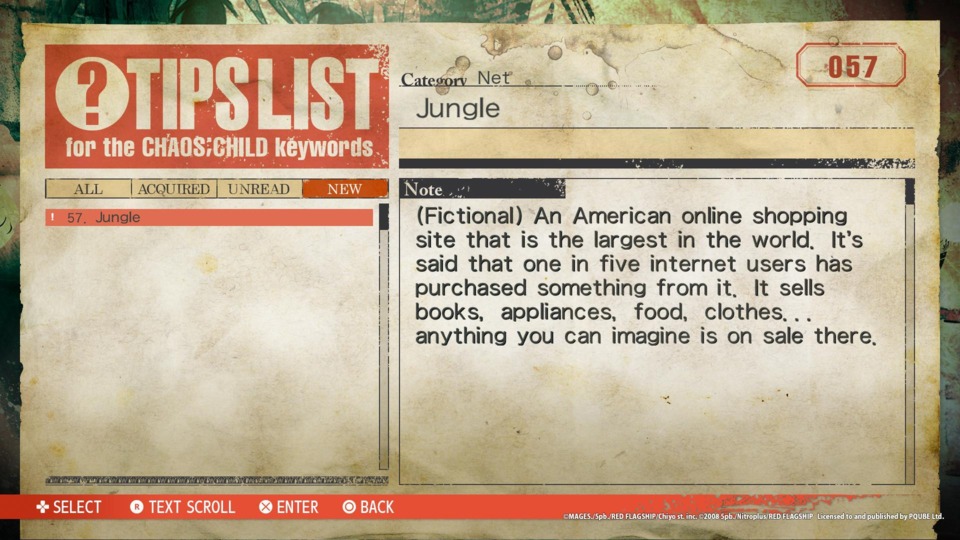
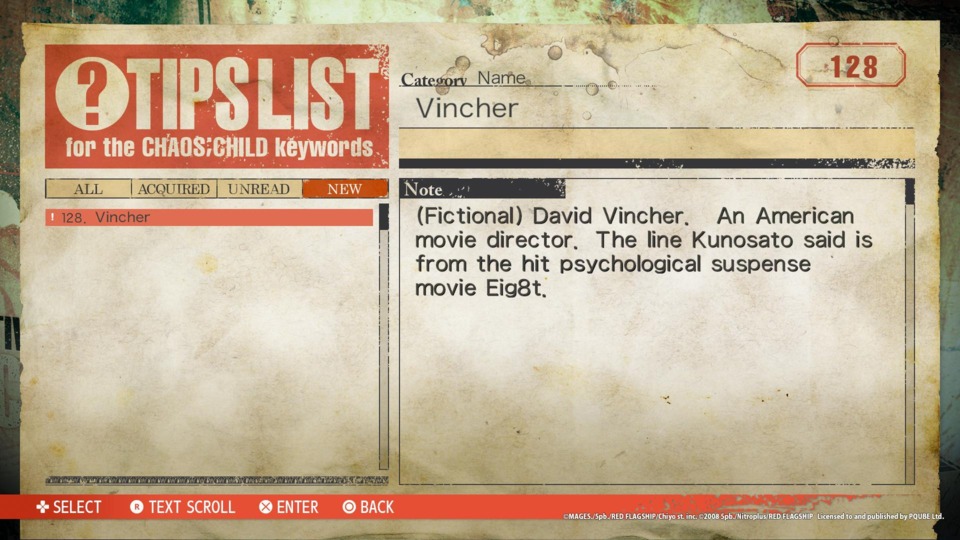
This is going to have to be another review like last month's The Letter where I'm going to delay the post-game breakdown, largely because I haven't found the time to complete the game yet (or any of its alternative routes, for that matter). Fortunately, as with The Letter, Chaos;Child was a 2017 release - or rather, its localization was - so I can punt it into next week's The Dredge of Seventeen rundown for some final impressions. On the whole it's been a little weaker than its contemporary Steins;Gate in most of the important respects - creating interesting and distinct characters, the themes and the sudden shifting tone of the story, the overall pacing, and how psychic powers running amok stretches credibility more than gadget-assisted time-travel if only just - but it's certainly not bad and I'm invested enough to see it through as the story continues to fly off the rails in an intriguing manner. I'll also have to reckon with the fact that Chaos;Child is a direct sequel to a game that has so far eluded an official localization: Chaos;Head. I'm sure I've disturbed some order of continuity by leaping ahead in the canon, even if many sources seem to suggest that Chaos;Child isn't so connected to Chaos;Head that the absence of the latter makes the former impossible to follow (certainly hasn't been the case for my playthrough). With all that in mind, I'll have more to say about how Chaos;Child concludes in just a little while.
Still doesn't feel like I've hit any clunkers yet for this VN feature though, and with only one month left in the year I'm sure I'll keep that streak alive. Jinxing? Nah, that's not a thing. Not like psychics.
